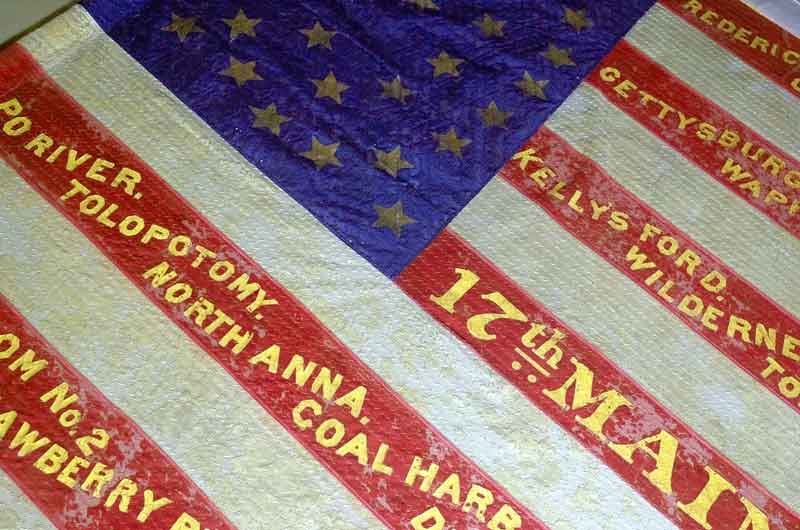Fifty years ago years ago this September, I entered the American history classroom of Elizabeth Ring as a sophomore at Deering High School in Portland.
A distinguished Maine historian, Ring taught her students that all history was local. In order to understand the broad trends of state and national events, we first must study daily life in local communities through reading letters, diaries, account books and newspapers and by examining old photographs and household objects.
I find myself approaching the sesquicentennial of the Battle of Gettysburg with those high school lessons still very much in mind. As I browse bookstore displays and library shelves, I find countless Civil War titles, most of them describing battles and leaders and discussing the preservation of the Union and the abolition of slavery.
One volume stands out from the rest, “Maine Voices from the Civil War,” the newly released catalogue that accompanies the exhibition of the same name that opened at the Maine State Museum in Augusta on Saturday.
In both the publication and the show, Laurie LaBar, the museum’s chief curator, takes an innovative look at how Maine people experienced the war. To do so, she explores such themes as Life in Camp, Battle, Prison, Family and Loss, and The Home Front.
While Joshua L. Chamberlain is represented by the revolver that he captured from a Confederate lieutenant at the Battle of Gettysburg, few of the large number of period letters, documents, posters, photographs and artifacts found in “Maine Voices” bear the names of notable military figures.
Instead, Maine’s participation in the war is told through the words, pictures and possessions of dozens of common men, women and children, including a 13-year-old drummer boy from Strong named Daniel Webster Marston.
In letters home to their family and friends, soldiers usually wrote with a simple prose that spoke directly to the hardships of war.
Writing to his brother Charles on July 6, 1863, Sgt. William Livermore, of the 20th Maine, described the carnage from the Battle of Gettysburg: “The ground every foot of it was covered with men, horses, clothing, cartridge boxes, guns, bayonets, scattered cartridges, cannon balls.”
The following year, Pvt. Sumner Bolton, of the 11th Maine, stoically reported, “I am alive although I have seen pretty hard times since I last wrote. I have lost my right eye and it seems hard, but I am thankful that it is no worse.”
Equally engaging is the impressive array of 150-year-old artifacts used by Mainers in the war, including battle flags, uniforms, weapons, saddles, camp furniture, musical instruments and quilts. The often-detailed documentation that accompanies these items as well as their fine state of preservation makes them the envy of any Civil War exhibit in the country.
Once again, the Maine State Museum proves beyond a doubt that it is the official attic of the state of Maine. And what treasures that attic contains!
Visitors to “Maine Voices from the Civil War” will want to see related exhibits offered by the Maine State Library and the Maine State Archives, which also are located in the Cultural Building in Augusta.
Both of these institutions have extensive written records of Maine’s participation in the war, including published regimental histories in the library and manuscript military records in the Archives.
An attractive and informative display in the foyer of the archives features photo murals showing images of Maine men who fought at Gettysburg. The archives has compiled an extensive collection of photographs of Maine Civil War soldiers. Their faces reflect the fortitude and strength of character of the 70,000 men who answered the Union’s call from every crossroads in the state.
This summer’s exhibits at the Cultural Building are part of a larger effort known as the “State of Maine Civil War Trail,” in which 23 institutions from Kennebunk to Kingfield are offering exhibits portraying different aspects of the war. Based on previous themes in the “State of Maine Trails” series, such as Maine prints and Maine folk art, this shared approach to programming views the entire state as a museum containing many exhibits to be visited.
After four years of conflict, the nation put away the tools of war that now engage our attention in exhibits such as “Maine Voices.” Today, a century and a half later, we are left to contemplate these objects, photographs and words, especially the words.
As this traumatic chapter in American history closed, Joshua Chamberlain spoke eloquently for those who witnessed the Confederate surrender at Appomattox, Va., in April 1865:
“Before us in proud humiliation stood men who neither toils nor suffering nor the fact of death nor disaster nor hopelessness could bend from their resolve. Was not such manhood to be welcomed back into the Union so tested and assured?”
Earle G. Shettleworth Jr. is Maine’s state historian.
Send questions/comments to the editors.



Success. Please wait for the page to reload. If the page does not reload within 5 seconds, please refresh the page.
Enter your email and password to access comments.
Hi, to comment on stories you must . This profile is in addition to your subscription and website login.
Already have a commenting profile? .
Invalid username/password.
Please check your email to confirm and complete your registration.
Only subscribers are eligible to post comments. Please subscribe or login first for digital access. Here’s why.
Use the form below to reset your password. When you've submitted your account email, we will send an email with a reset code.